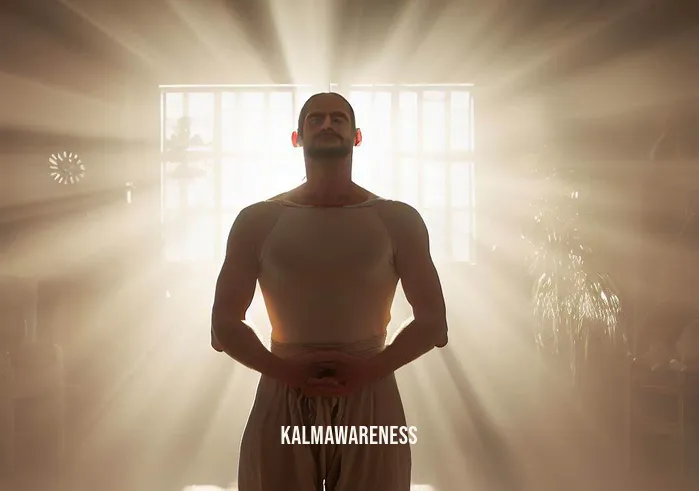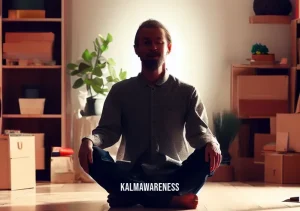The Unexplored Itchiness of Meditation
You might be wondering why, during the most serene moments of your meditation, an uncomfortable itch starts to distract you. This exploration into itching during meditation is not only about understanding its cause but also how it intertwines with the practice of mindfulness, sensations, and the journey of overcoming discomfort.
The Itch We Often Overlook
It’s a common scene: you’re sitting comfortably, focusing on your breathing, and immersing in the silent rhythm of the present moment. Suddenly, there’s a tickle on your nose or a subtle prickling on your arm. It’s the itch, lurking in the background, waiting for the perfect moment to pull you out of your meditative trance.
“To itch or not to itch, that becomes the meditator’s silent dilemma.”
The Philosophy Behind the Itch
Itching during meditation can be more than just a physical sensation. It can be a reflection of our habitual thinking. Our minds, in their endless quest for distraction, magnify trivial sensations to draw our attention away from the present moment. When we notice this, instead of getting agitated, we can utilize it as a lesson in mindfulness. How? By recognizing the itch but choosing not to react.
Tolerance & Mindful Acceptance
While some schools of thought advocate for shifting and attending to the itch, others believe in witnessing it without action. The latter approach borrows from ancient African meditation techniques, where endurance and tolerance are taught. Instead of seeing the itch as a mere distraction, view it as a part of the meditation experience. Dive deep into it. What does it feel like? How does it change? What emotions does it stir?
The next time you meditate and an itch arises, remember this:
- Distraction: It’s a test of your mindfulness skills.
- Tolerance: Understand the discomfort and be with it.
- Observation: Explore the itch as you would explore your breath.
- Release: When you don’t react, the power of the itch diminishes.
This approach mirrors the philosophy of mindful martial arts, where external distractions are not just resisted but incorporated into the practice.
Reconnecting With The Present
When confronted with itching during meditation, it is essential to remember the golden rule of mindfulness: Life is available only in the present moment. It’s not about suppressing the itch, but rather about grounding yourself back into the present.
For some, the connection to nature helps in this grounding process. Activities like mindful hiking emphasize the harmony of external sensations with internal awareness.
Final Thoughts on Itching and Meditation
Meditation, at its core, is not about achieving a state of eternal calmness but understanding and embracing the full spectrum of human sensations and emotions. The itch, in this sense, is a profound teacher. It might seem insignificant, but with a curious mind and a tolerant heart, it can guide us deeper into the realms of self-awareness.
“In the stillness of meditation, even an itch becomes a bridge to enlightenment.”
As you explore the realms of meditation, let the itch be your guide, not a deterrent. Seek advice, explore different meditation stories, and embrace the journey with an open heart.
I invite you to continue to the next part of this article where we’ll dive deeper into the science behind itching during meditation and the practical steps you can take to address it. Plus, uncover how the lessons from itching align with various mindfulness practices around the world.
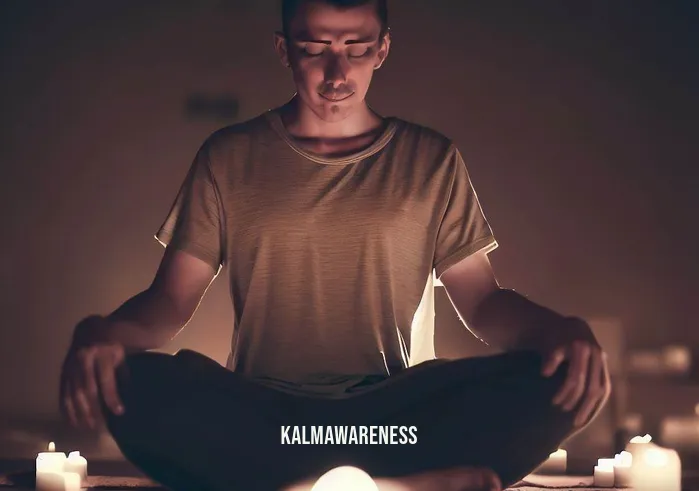
Understanding the Science Behind Itching During Meditation
In the realm of meditation, it’s intriguing how such a simple, natural sensation like itching can hold immense depth. After understanding the philosophical aspects in the previous section, let’s delve into the science behind itching during meditation and explore how it integrates with our neurology and psychology.
Neurological Mechanisms of Itching
At the most fundamental level, an itch, scientifically known as ‘pruritus’, arises due to specific stimuli that trigger our nerve endings. These stimuli can vary from physical (like an insect bite) to psychological (thinking about an itch).
When meditating, several factors intensify the sensation:
- Enhanced Sensory Awareness: As you meditate, your awareness of internal and external stimuli sharpens. You become more attuned to subtle sensations, making you notice minor itches you’d typically overlook.
- Reduced External Distractions: With external distractions minimized, the brain tends to amplify internal sensations, including the itch. In the silence, even the most minor itch seems profound.
- Psychological Amplification: Just like the phenomenon where thinking about fleas makes you feel itchy, even the thought of itching can produce the sensation.
Psychological Response to Itching
Understanding the itch is one part of the equation, responding to it is another. Our responses can be categorized into three main patterns:
The Avoider: Quickly scratching the itch to get instant relief. Such individuals often find it challenging to stay in the present moment and are regularly searching for immediate gratification.
The Observer: Recognizing the itch but choosing not to act. These individuals reflect a strong mindful presence, where they witness sensations without becoming them.
The Analyzer: Trying to understand the itch’s root cause, diving into its depth, and sometimes even getting lost in it. This approach is often seen in individuals inclined towards meditative analysis.
Addressing Itching: Practical Solutions
While understanding the science behind itching is insightful, knowing how to handle it practically is equally vital. Here’s a list of solutions one can try:
Positioning: Sometimes, the way you sit can cause physical discomfort leading to itching. Trying different meditation postures can help.
Clothing: Wear loose and comfortable attire, preferably made of natural fibers. This can drastically reduce physical itching.
Environment: Ensure the meditation environment is clean and free from irritants. An optimized meditation space can make a significant difference.
Mindset: Prepare mentally before meditation. Understand that sensations like itching will arise, and decide beforehand how you’ll respond.
Duration: If you’re new to meditation, start with shorter sessions. Gradually increase the duration as your tolerance develops.
A Quick Glance: Itching in Different Meditation Forms
| Meditation Form | Approach to Itching | Origin |
|---|---|---|
| Mindful Muscle Meditation | Embrace and observe without reacting | Global |
| Penn Mindfulness Class | Understand the psychological underpinnings of the itch | USA |
| Meditation for Menopause | Address itches that arise due to hormonal changes | Global |
| Gratitude Yoga | Express gratitude for all sensations, including the itch | India |
| Mindful Martial Arts | Use the itch as a distraction training tool | Asia |
As we continue our journey, the next part of the article will shed light on anecdotes and stories from seasoned meditation practitioners. Learn from their experiences, mistakes, and insights regarding itching during meditation. Embrace the sensation, understand its roots, and evolve in your meditation practice.

Anecdotes and Insights: Navigating Itching During Meditation
The journey of meditation is deeply personal, yet universally shared. As we delve further into the topic of itching during meditation, we uncover a treasure trove of stories, wisdom, and lessons from experienced practitioners. In this section, let’s explore personal anecdotes and the enlightenment they offer, supplemented with inspiring quotes that shed light on the nature of discomfort, patience, and personal growth.
1. The Monk and the Persistent Itch
Once in the serene monasteries of Tibet, a young monk struggled greatly with itching during meditation. Disturbed, he sought guidance from an older, wiser monk. The elder listened patiently and shared, “Your itch is not a distraction; it’s an invitation. An invitation to cultivate patience, tolerance, and deepened focus.”
“The gem cannot be polished without friction, nor man perfected without trials.” — Chinese Proverb
This story highlights how challenges, even as subtle as an itch, can be stepping stones to a more profound mindfulness practice. And how by embracing the itch, we cultivate a more profound inner stillness.
2. A Yogi’s Brush with Nature
A renowned yogi meditating in the dense forests of India often found himself scratching incessantly due to insect bites. Instead of getting frustrated, he used this as a lesson in acceptance, grounding himself in the belief that he was a part of the ecosystem, not apart from it.
“Out of difficulties grow miracles.” — Jean de La Bruyère
By viewing the itching as a harmonious interaction with nature, the yogi transformed a potential distraction into an enriching experience of interconnectedness.
3. The Teacher’s Unexpected Lesson
In a mindfulness class for teens, the teacher noticed a student visibly irritated by a recurring itch. She paused the session to address it, stating, “In life, we cannot control all stimuli, but we can choose our reaction.” She encouraged the class to approach itching during meditation not as an obstacle but as a practice in reaction management.
“Every adversity, every failure, every heartache carries with it the seed of an equal or greater benefit.” — Napoleon Hill
This incident serves as a reminder that meditation is more than just inner peace; it’s also about navigating the external world with grace and poise.
4. The Meditation Retreat Epiphany
On a ten-day silent meditation retreat, participants were strictly advised against moving or scratching during sessions. One participant, while recounting her experience on a renewed mind employee portal, mentioned her intense struggle with itching during the early days. However, as days progressed, she realized the less she mentally resisted the itch, the less pronounced it became.
“All the adversity I’ve had in my life, all my troubles and obstacles, have strengthened me… You may not realize it when it happens, but a kick in the teeth may be the best thing in the world for you.” — Walt Disney
This account beautifully captures the essence of surrendering to the present moment, revealing that sometimes, resistance amplifies discomfort.
5. The Dancer’s Graceful Acceptance
A professional dancer, accustomed to the spotlight and grace, found herself struggling with itching during her mindful dance sessions. Instead of letting it hinder her flow, she began incorporating it into her dance, transforming each itch into a graceful movement, making the discomfort part of her artistic expression.
“Turn your wounds into wisdom.” — Oprah Winfrey
Her story is a testament to the art of transformation, where challenges are not just faced but embraced and transformed into expressions of beauty.
As we traverse the enlightening realm of meditation, these stories and quotes serve as gentle reminders of the profound wisdom embedded in everyday experiences. In the upcoming chapter, we’ll explore the therapeutic aspects of addressing itching during meditation, diving deep into holistic solutions and their multifaceted benefits. Join us to understand how something as mundane as an itch can open doorways to holistic wellness and well-being.
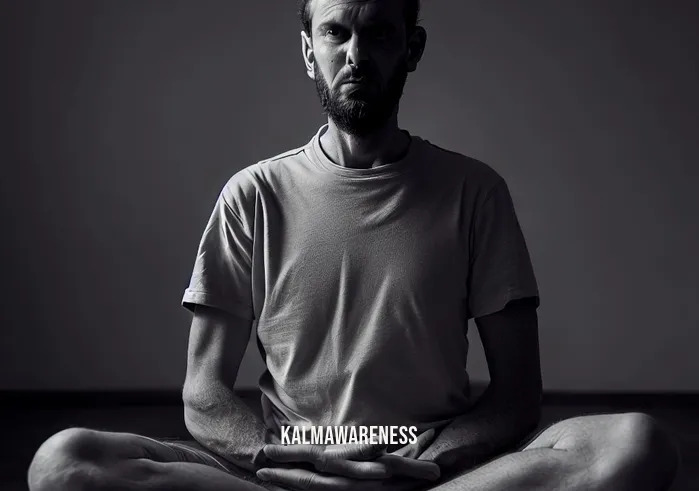
The Holistic Remedies: Combatting Itching During Meditation
Navigating the path of mindfulness and meditation, we’ve identified, through stories and quotes, the profound lessons itching can bring. But let’s shift our attention now. While it’s vital to recognize the deeper meanings of these sensations, addressing the physical discomfort can further augment the quality of one’s meditation. Here’s a compilation of holistic approaches, remedies, and techniques to help ease the itch.
Traditional Solutions:
Wardrobe Choices: One of the most straightforward solutions is to dress in soft, breathable, and non-restrictive clothing. As highlighted in a post on mindful martial arts, even athletes prioritize comfort in attire to prevent unnecessary distractions.
Pre-session Cleansing: A thorough bath or a simple wash of the face and hands can do wonders. The use of mild, natural soaps can remove irritants that might lead to itching during meditation.
Environment Control: Ensure that the meditation space is clean. Regular cleaning can prevent irritants like dust. As explored in a piece about mindful hiking, even in natural settings, being aware of your environment is paramount.
Natural Remedies:
Aloe Vera: A natural anti-inflammatory, it soothes the skin. Applying a dab of fresh aloe vera gel can prevent and alleviate itching.
Lavender Essential Oil: Apart from its calming scent that can enhance meditation, lavender has properties that help reduce skin irritation. However, always mix essential oils with a carrier oil before applying to the skin.
Chamomile: Sipping on chamomile tea or applying chamomile-infused products can offer relief due to its anti-inflammatory properties. It’s no wonder that many mindfulness books for teens recommend chamomile as a soothing ritual.
Mindful Techniques:
Body Scan: A method highlighted in mindful miracle writings, body scan meditation can help in acknowledging the itch without reacting. By mentally scanning the body from head to toe, one can address the itch without breaking the flow of meditation.
Focused Breathing: As emphasized in the Breathing and Meditation cluster, anchoring oneself to the breath can help divert attention from the itch. With each inhalation and exhalation, the sensation becomes more bearable.
Visualization: Imagine the itch as a transient wave, coming and going. Over time, with practice, these waves will lessen in intensity and frequency.
External Aids:
Meditation Cushions: Using a comfortable cushion or mat can reduce the physical discomforts that might lead to itching. As shared in an article about being mindful en español, cultural variations in meditation practices often include different seating arrangements to optimize comfort.
Natural Insect Repellents: If you’re meditating outdoors, consider using natural repellents to keep bugs at bay.
Skin Moisturizers: Natural moisturizers like shea butter or coconut oil can prevent dry skin, a common cause for itching.
Conclusively, itching during meditation is both a challenge and an opportunity. By combining mindful techniques with holistic remedies, we create an environment that supports and nurtures our practice. But as we journey deeper, we uncover more layers of meditation, including its challenges and its unparalleled beauty. In the upcoming section, we’ll delve into the transformative power of meditation, transcending beyond the physical realm. Join us as we explore the ethereal aspects of this age-old practice.
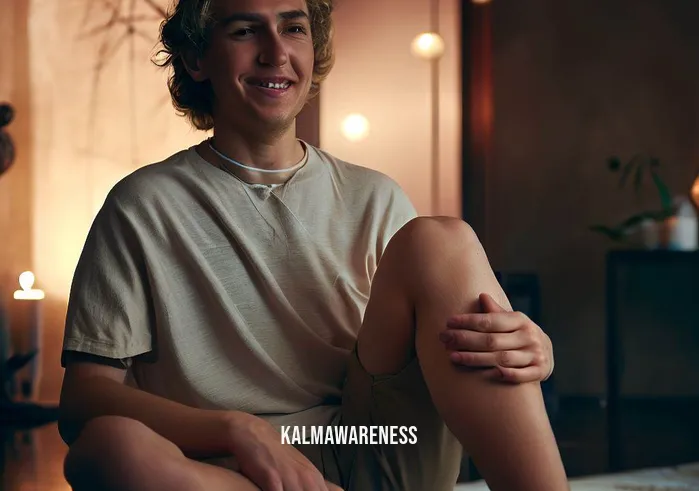
The Essence of Embracing Itchiness in Meditation: A Culmination
Have you ever thought of itching during meditation as a metaphor for life? It presents us with a lesson in patience, resilience, and understanding. As we draw our exploration to a close, let’s reflect on the broader context of discomfort in our meditative journey and the myriad ways it molds us.
The Life-Meditation Analogy
Just as in life, the journey of meditation is not without its bumps and hitches. An itch, a twitch, or even a fleeting thought can disrupt our state of mindfulness. Such is the unpredictability of existence. But the real essence lies not in the absence of these challenges but in how we choose to navigate them. Much like the insights provided in life is available only in the present moment, the now is what truly matters.
Beyond the Physical
When an itch arises during meditation, it’s easy to become overwhelmed. But the beauty lies in transcending this physical realm. Your experience of itching becomes a profound lesson in impermanence, as emphasized in meditation stories for students. Everything, be it a sensation, a thought, or a phase, is fleeting.
Gratitude in Discomfort
The very fact that we can feel, even if it’s an itch, is a testament to our human experience. Instead of shying away from this sensation, we should approach it with gratitude. After all, gratitude yoga practices in Princeton reiterate the significance of appreciating every facet of our existence, even the uncomfortable ones.
Empathy & Understanding
When we sit in meditation and an itch arises, we’re also presented with an opportunity to cultivate empathy. Just as we understand our own discomfort, we can extend this understanding to the world around us. It’s a sentiment echoed in the renewed mind employee portal, where mindfulness creates a bridge between personal experience and communal empathy.
Concluding Our Journey & Looking Ahead
Our exploration of itching during meditation was more than just about a physical sensation. It was a deep dive into the heart of mindfulness, understanding, and embracing every aspect of our journey. Just as the meditation consultant would advocate, the learning never stops. There’s always another layer to peel, another perspective to gain, and another experience to cherish.
Thank you for embarking on this exploration with us. We hope it has provided you with insights, tools, and perspectives that will enrich your meditative practices. As we conclude this chapter, remember that every challenge, every itch, and every moment is a stepping stone in your journey of self-awareness and growth.
Before you go, don’t forget – our platform KalmAwareness is brimming with stories, techniques, and insights that delve deep into the realms of mindfulness, meditation, and personal growth. We invite you to continue immersing yourself in the wisdom and insights we offer.
Best wishes on your path, and until next time, stay mindful! 🍃
